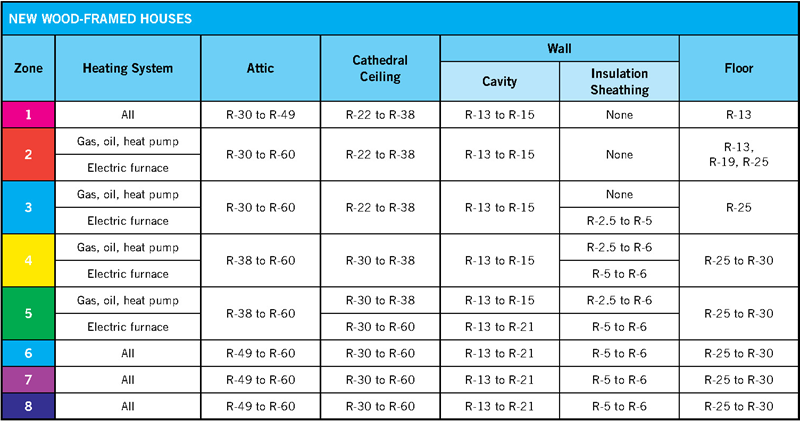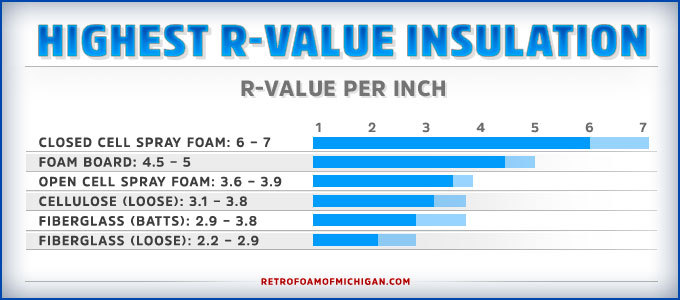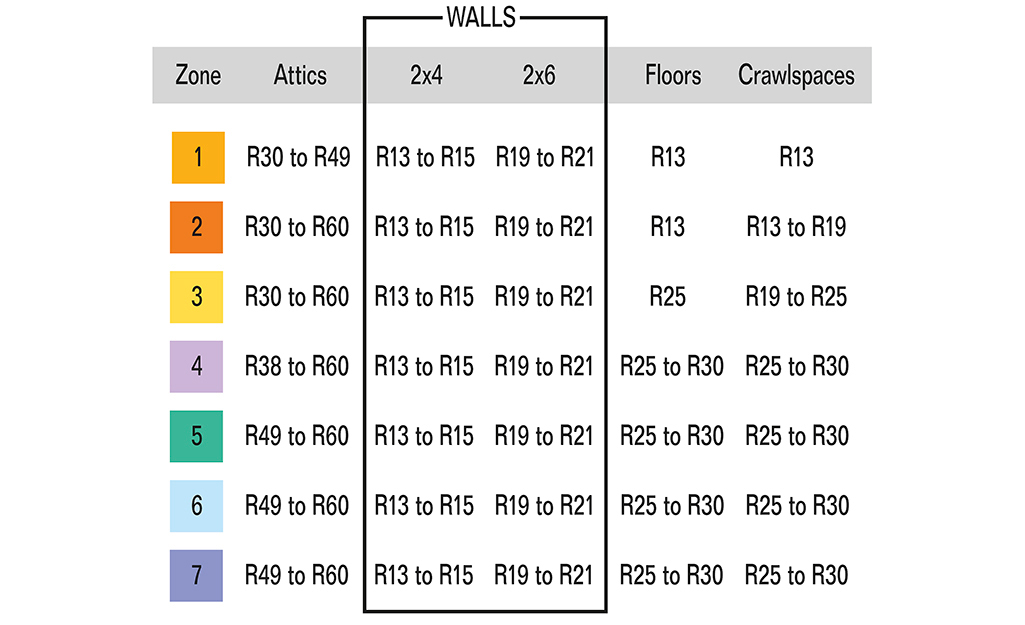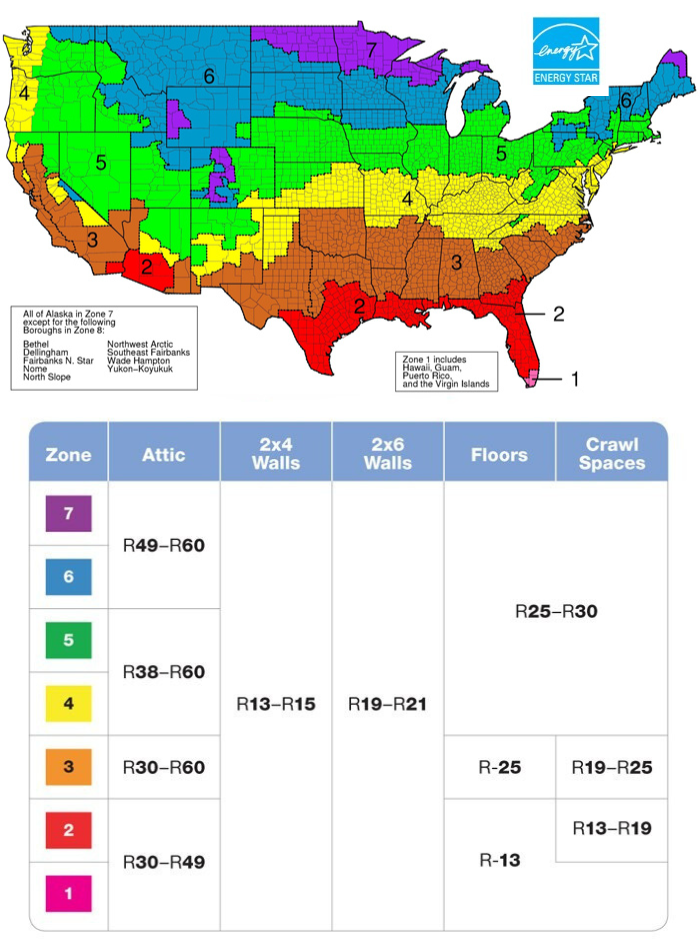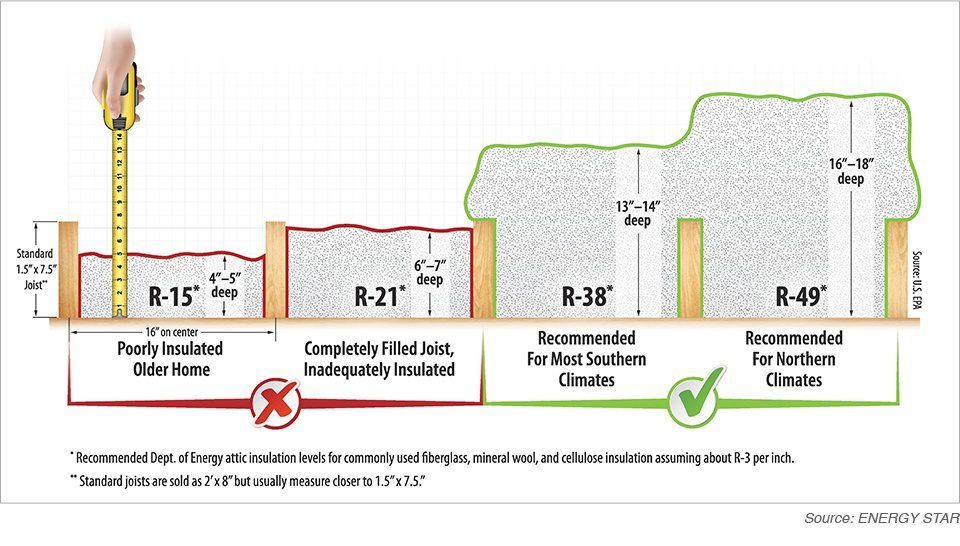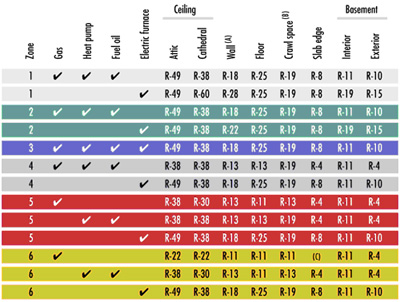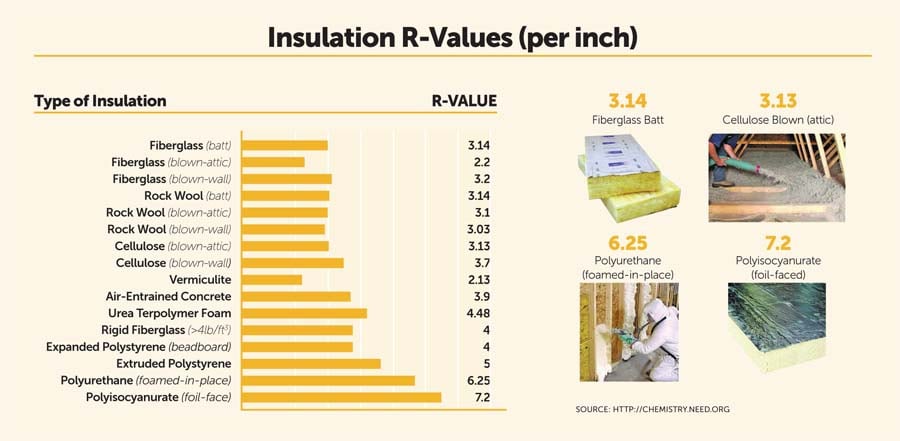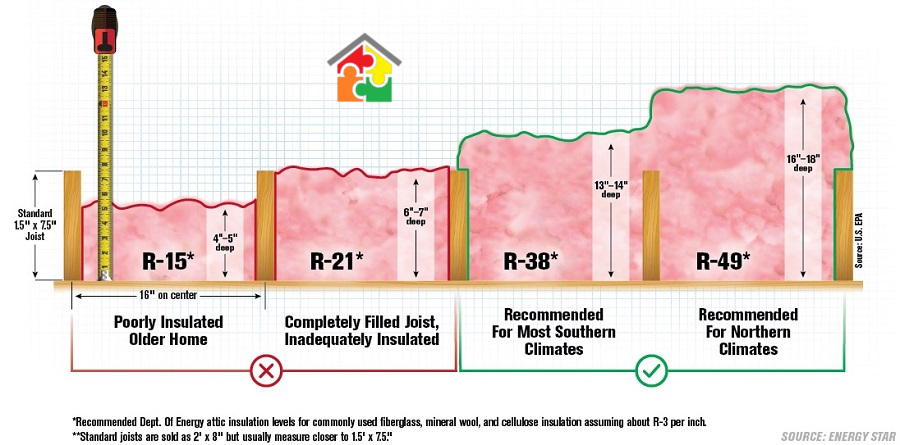R-value Chart
Roofing R-Value Per Inch R-V Per Unit Roofing Felt 006 Asphalt Roll - 90 lb -- 015 Asphalt Shingle -- 044 Slate ½ in.
R-value chart. 2 nominal 1 12 actual 188 40. Conditioned per ATSM C1289 Test method ASTM C51812. The R-value your insulation needs depends on your local climate.
R-Value m2KW Permeability50Pa Notes. R-Value Chart for Enerfoil TM Rigid Foam Faced Insulation. Log wall R-Values vary 16.
R-Value of Building Materials Material R Inch R Thick-ness Fiberglass ₄ inch 300 1 inch 400 ₂ inch 600 Extruded Polystyrene ₄ inch 375 1 inch 500 1 ₂ inch 750 Foil-faced Polyisocyanurate ₄ inch 540 1 inch 720 1 ₂ inch 1080 Siding Materials Hardboard ₂ inch 034. You can then check out this R-value insulation chart. Herein what type of insulation has the lowest R value per inch.
R-value of typical 34 thick pine softwood about R 125 30 Wood. Wood Logs Lumber Cedar 133 40. Wall - Outside Air Film.
R-value is a measurement of thermal resistance and measures the ability of heat to transfer from one side of an object to another. That means that a 6-inch softwood has an R-rating of 6141 846. 10mm - 13mm07 - 077.
Air Film Interior Ceiling14. Wood 2x6 1 12 x 5 12 actual 688 40. The higher the R-Value the better the thermal performance of the insulation.
Loose-fill cellulose is rated between R-32 and R-39 per inch making it one of the least efficient insulation materials available. The R-value of wood varies by wood density species moisture content. Siding - Wood Bevel.
Compressed R-value Chart When compressed to less than its labeled thickness glass fi ber insulation will experience a reduction in R-value. The chart lets you know what ICF-values you need for your walls attics floors and crawlspaces based on your geographical zone. The chart below indicates the compressed R-value of standard building insulation products when installed in framing cavities with a depth that is less than the labeled thickness of the insulation.
If you wanted to know the R-value of stainless steel or aluminum the calculation would be. As a benchmark one inch of solid wood has an R-value of 1. R-Value is a measure of insulations ability to resist heat traveling through it.
Thickness Inches R-value in I-PImperial RSI R-value in Metric 05. We can basically say that 6-inch softwood has an R-value of R-8 and 6-inches of hardwood has an R-value of R-4. -- 020 Siding R-Value Per Inch R-V Per Unit Wood Shingles 16in.
R-value is in very simplistic terms the opposite of how fast heat moves through something it is measuring how much something slows down the flow of heat. And the Department of Energys corresponding climate zone. Once you find your homes zone on this map you can use the below insulation R-value chart to determine the minimum R-value your insulation should have.
This chart shows the approximate R-value per inch of various insulating materials but does not take into account any air leakage that can dramatically affect overall performance. Wood 2x4 1 12 x 3 12 actual 438 40. R-value thickness thermal conductivity.
Almost any type of insulation can improve your homes performance. In comparison an inch of blown fiberglass insulation has an R-value of 31 - 34 and an inch of blown cellulose in an attic has an R-value of 32 - 37. Polyisocyanurate features an R-value up to 80 which other insulating materials cannot touch.
Available in batts blankets rolls and loose-fill fiberglass is the most ubiquitous insulation material in use today. -- 005 Wood -- 094 Metal any -- 000 Ceramic Tile ¼ in. You will notice that across the board the R-value requirements for walls are similar.
The map above shows each region of the US. Wood door solid per inch. Air Film Interior Wall14.
Spray foam insulation especially the closed-cell kind has an R-value of 60 per inch sometimes as high as 65. According to the US Department of Energy source here R-value for wood ranges between 141 per inch for most softwoods and 071 for most hardwoods.
